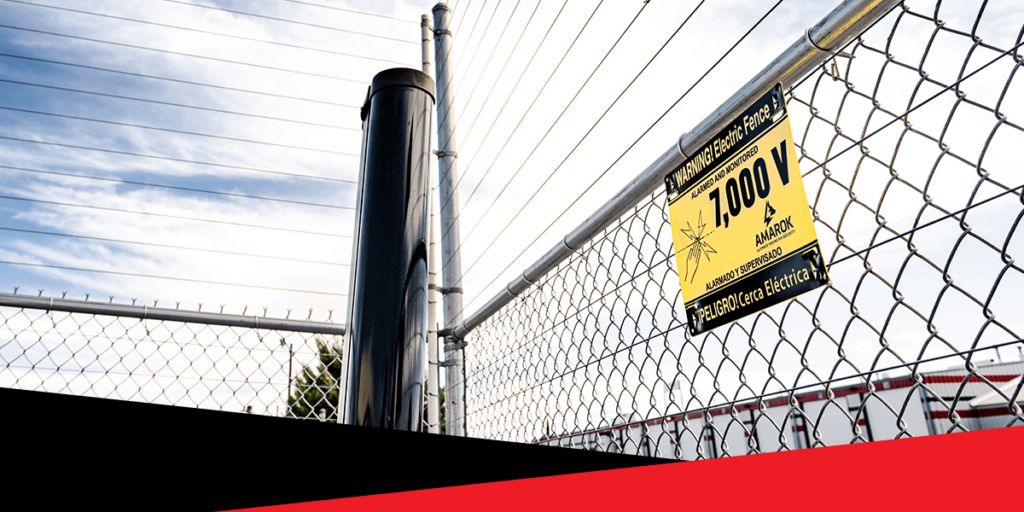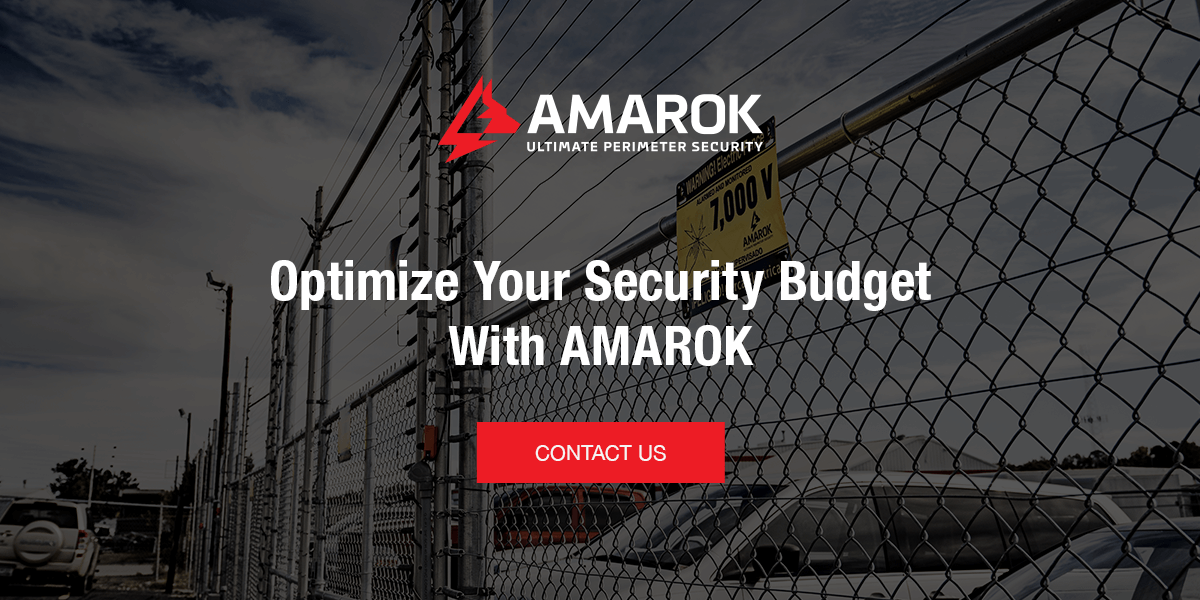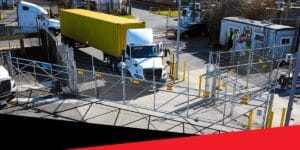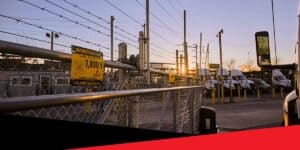Perimeter security is a key component for commercial businesses, especially those with equipment stored outside. Every commercial business, large or small, needs to prioritize safety to prevent threats, such as external theft, vandalism, and unauthorized access.
Effective perimeter security protects your assets while ensuring the safety of your employees and customers. But how does one determine a budget to protect their business? When considering security measures, it’s essential to understand the factors that influence a security budget.
Perimeter security requirements can vary significantly across facilities and industries. Learn how to determine perimeter security budget benchmarks for commercial businesses.
Understanding Perimeter Security
Perimeter security is a set of measures that protects the outer boundaries of a property or facility from unauthorized access and potential threats. It serves as the first line of defense against intrusions, external theft, vandalism, and other security risks. The primary goal of perimeter security is to account for the five d’s of security — deter, detect, deny, delay, and defend.
A multi-layered approach to perimeter security includes the following elements:
- Electric fencing: An electric fence acts as a physical barrier and psychological deterrent to prevent unauthorized access. Would-be intruders receive a safe but memorable shock if they try to breach the barrier.
- Access control systems: Gate Access Control ensures security at entry and exit points, restricting access to authorized personnel only.
- Video surveillance: Commercial video surveillance cameras monitor activity around the perimeter and provide real-time alerts.
- Security lights: Alarm-based security lights flood the area with light when the fence alarm is activated, enhancing visibility at night. The alarm systems also notify monitoring security personnel or law enforcement of unauthorized access attempts.
Factors That Influence Your Perimeter Security Budget
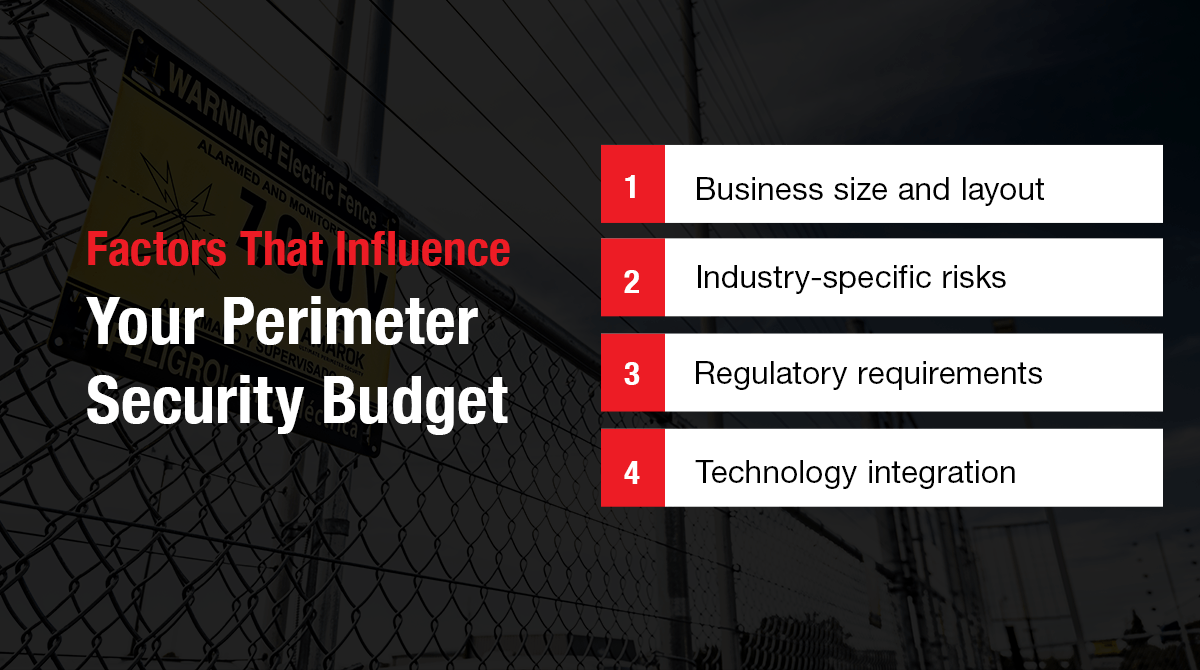
When calculating budget benchmarks for perimeter security, several factors must be considered. Each of the following factors can significantly influence the overall cost and effectiveness of perimeter security measures:
- Business size and layout: Larger premises or complex layouts require more security measures compared to smaller sites. Larger facilities need longer fencing, more video surveillance cameras, and additional lighting. A higher number of gates or access points requires additional security measures, like access control systems and monitoring.
- Industry-specific risks: Different industries face unique security challenges. For example, construction sites face external theft of equipment, while fleet companies face challenges with catalytic converter theft. Your industry-specific risks and objectives should be taken into account when budgeting for your security plan.
- Regulatory requirements: Certain industries are subject to strict regulations and permitting requirements that dictate the minimum level of security needed. Insurance providers may also require specific security measures to be in place for companies to continue to receive lower premiums.
- : Integrating smart surveillance systems, biometrics, and automated access controls can increase initial costs but may reduce long-term expenses. Integrated systems that centralize monitoring and control may also require a higher upfront investment but will streamline operations.
Budget Considerations for Perimeter Security
Developing a perimeter security budget will look different for small, medium-sized, and large businesses.
Small Businesses
Invest in electric fencing to create a physical barrier and consider entry-level CCTV systems with cameras to monitor key areas. Install basic outdoor lighting to improve visibility at night. Keypads and basic locking systems are simple control measures for gates. Explore remote monitoring options that alert you to security breaches to eliminate the need for full-time onsite security personnel.
Medium-Sized Businesses
Consider more robust electric fencing solutions with an extensive video surveillance system, including remote access, night vision, and motion detection. Card readers and biometric systems provide more sophisticated access control measures that enhance security without significantly increasing costs.
You should also budget for threat assessments where perimeter security specialists will identify vulnerabilities and recommend improvements.
Large Businesses and High-Risk Sites
Invest in comprehensive integrated security solutions that combine physical and technological measures for maximum protection. Allocate funds to ensure compliance with industry-specific regulations or insurance requirements that may dictate minimum security standards. Consider electric fencing with customizable enhancements — such as lay-down fencing, angled fencing, and bollards — that are tailored to the specific risks associated with your site.
It’s important to budget for around-the-clock monitoring services to detect threats in real time and respond quickly to incidents. Train staff to respond effectively to security threats or emergencies, and establish partnerships with local law enforcement to enhance security response in your area.
Optimize Your Security Budget With AMAROK
AMAROK prides itself on being the ultimate perimeter security solution provider for commercial businesses across North America. Our flagship product, The Electric Guard Dog™ Fence, is 99% effective at keeping unwanted criminals out using a 7,000 volt pulse every 1.3 seconds. AMAROK also offers alarm monitoring, video surveillance, lighting options, gate access control, and so much more.
To better understand the benefits of a more proactive and cost-effective perimeter security solution, download our free guide to proactive security.
